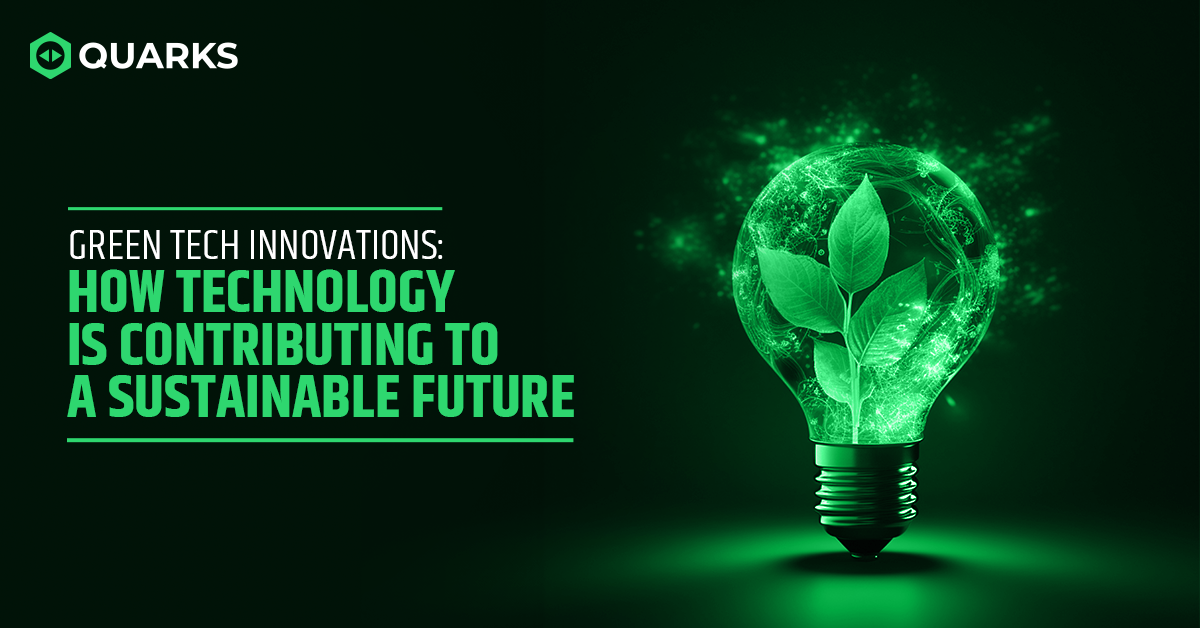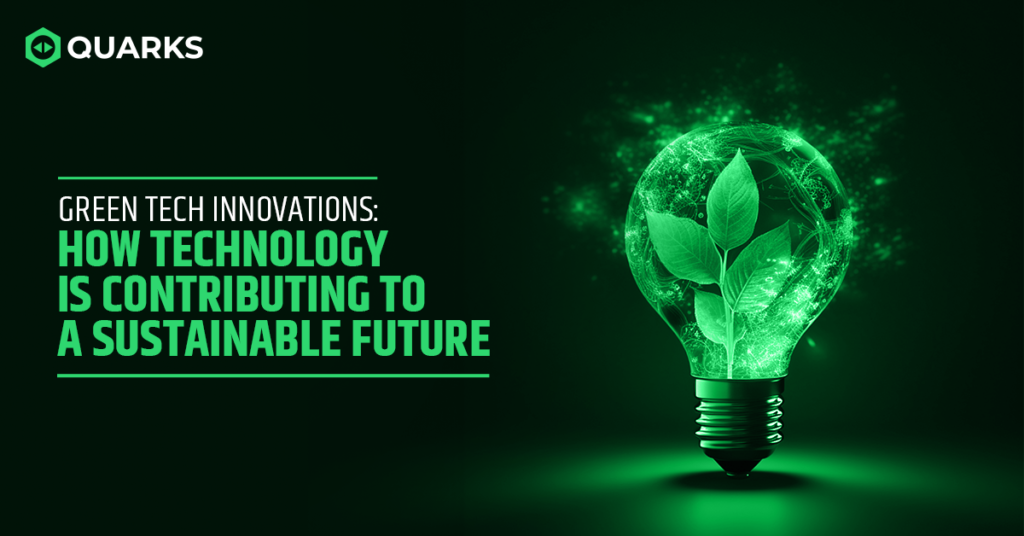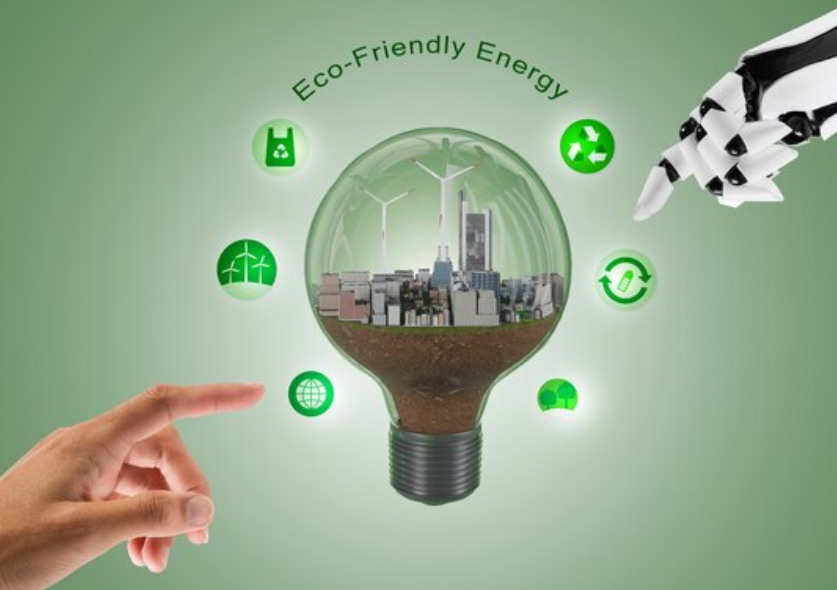Technology
Augmented Reality vs. Virtual Reality: What’s the Difference and Which is the Future?

In the ever-evolving world of technology, Augmented Reality (AR) and Virtual Reality (VR) are often discussed as groundbreaking innovations poised to transform industries and daily life. From gaming to education, these immersive technologies are gaining momentum, but what exactly sets them apart, and which one holds the key to the future?
Augmented Reality vs. Virtual Reality: What’s the Difference and Which is the Future?

Understanding Augmented Reality (AR)
Augmented Reality overlays digital information onto the real world, enhancing what you see, hear, and experience. Using devices such as smartphones, tablets, or AR glasses, users can interact with computer-generated objects while still being aware of their surroundings.
Some well-known examples of AR include:
- Pokémon Go: This popular mobile game brought AR into the mainstream, allowing players to “catch” virtual Pokémon in real-world locations.
- Snapchat Filters: Many social media platforms now utilize AR for face filters that add playful or artistic elements to selfies. joyfulroamers.com
- Google Maps Live View: Google’s AR feature helps users navigate streets by overlaying directions on top of real-world environments.
AR is highly accessible and easy to integrate into daily life because it typically only requires a smartphone or tablet. By enhancing reality rather than replacing it, AR has the potential for a wide range of applications, from improving retail shopping experiences to assisting in surgery.
Understanding Virtual Reality (VR)
Virtual Reality, on the other hand, immerses users in a fully digital environment. With VR headsets like Oculus Rift or PlayStation VR, users can experience a simulated world, cutting off all interaction with the real world. VR takes users to places that don’t exist or are difficult to reach in real life, offering a unique, immersive experience.
Popular VR applications include:
- Gaming: VR has revolutionized the gaming industry, creating fully immersive environments in games like Beat Saber or Half-Life: Alyx.
- Training and Simulations: VR is widely used for training in fields like aviation, healthcare, and the military, allowing professionals to practice without real-world risks.
- Virtual Travel: VR offers people the opportunity to explore exotic locations or historic landmarks from the comfort of their own homes.
However, VR has limitations. It typically requires expensive, high-end equipment and can cause disorientation or “VR sickness” for some users. Its all-encompassing nature means users are cut off from the real world during use, which can be both a strength and a drawback.
Key Differences Between AR and VR
1. Immersion Level
- AR: Enhances the real world by overlaying digital elements, offering a blend of reality and virtuality.
- VR: Completely immerses the user in a virtual environment, replacing the real world entirely.
2. Hardware Requirements
- AR: Requires basic equipment like smartphones, tablets, or AR glasses.
- VR: Needs dedicated hardware like VR headsets, controllers, and sometimes high-performance computers or gaming consoles.
3. Interactivity
- AR: Users interact with the real world and digital objects simultaneously. For instance, you can place a virtual couch in your living room to see how it fits with the rest of your furniture.
- VR: The interaction is solely with the virtual environment. You can explore a virtual space, but your real-world environment is not part of the experience.
4. Applications
- AR: Primarily used in industries where real-world interaction is crucial, such as retail, healthcare, and navigation.
- VR: Suited for immersive experiences in fields like gaming, training simulations, virtual tours, and remote collaboration.
AR vs. VR: Which is the Future?
Augmented Reality: A Seamless Integration
AR is often viewed as more practical for everyday use because it integrates smoothly into the real world. The low barrier to entry (a smartphone is all most people need) and its potential applications in education, healthcare, retail, and entertainment make AR a strong contender for future widespread adoption.
In retail, for example, AR allows consumers to try products before they buy, enhancing customer experience and reducing returns. IKEA’s AR app lets users visualize how furniture would look in their homes, making the buying process more interactive and informed.
In healthcare, AR can be a powerful tool for surgeons, allowing them to access real-time patient data and visualizations without taking their eyes off the operation. The potential for growth in AR’s real-world applications is immense, especially as AR glasses and other wearable tech become more refined and accessible.
Virtual Reality: Immersive but Limited by Hardware
While VR offers unmatched immersive experiences, its adoption in everyday life is slower due to hardware requirements and the fact that it’s more suited to niche applications. VR thrives in areas where total immersion is necessary, such as gaming, training simulations, or virtual collaboration for professionals across the globe.
Though the technology is advancing quickly, mass adoption is still limited by cost and accessibility. However, VR’s potential in sectors like education and mental health could drive future growth. For example, virtual classrooms could give students around the world access to interactive learning environments, while VR therapy can be used for treating PTSD or phobias in a controlled, immersive setting.
The Hybrid Future: AR and VR Together
Looking forward, many experts predict that the future lies in a hybrid approach—known as Mixed Reality (MR)—which blends both AR and VR into one seamless experience. MR allows digital and physical objects to coexist and interact, providing the best of both worlds. This fusion could revolutionize sectors like real estate, where buyers could experience virtual tours of properties with digital annotations overlaying the actual space.
Augmented Reality vs. Virtual Reality: What’s the Difference and Which is the Future?

For now, AR seems better positioned for widespread adoption in everyday life due to its accessibility and practicality, while VR will continue to thrive in specific sectors that benefit from full immersion. As technology continues to evolve, the line between AR and VR may blur, but one thing is certain: both have the potential to transform the way we live, work, and play.
Conclusion
Augmented Reality and Virtual Reality each have their strengths and serve different purposes. AR enhances the real world with digital overlays, offering practical applications in diverse fields. VR, on the other hand, immerses users in entirely virtual environments, excelling in entertainment, training, and simulations. The future likely belongs to both, with AR potentially becoming a staple in everyday life and VR continuing to push the boundaries of immersive experiences.
Augmented Reality vs. Virtual Reality: What’s the Difference and Which is the Future?
Technology
Green Tech Innovations: How Technology is Driving Sustainability

In recent years, the world has become increasingly aware of the need for sustainable solutions to combat climate change, reduce waste, and preserve natural resources. As the effects of global warming become more pronounced, both individuals and industries are seeking ways to adopt eco-friendly practices. One of the most significant contributors to this movement is the rise of green technology (often called “green tech”). Green tech refers to a wide range of innovations designed to reduce environmental impact and promote sustainability. These innovations span various sectors, from energy production to transportation, agriculture, and waste management.
Green Tech Innovations: How Technology is Driving Sustainability

1. Renewable Energy Technologies
Perhaps the most notable area of green tech innovation is in renewable energy. Fossil fuels have long been a primary source of energy, but their environmental impact is devastating. Green tech is focusing on developing renewable energy sources that reduce greenhouse gas emissions and dependence on non-renewable resources.
- Solar Power: One of the most accessible and rapidly advancing renewable energy sources is solar power. Solar panels have become more efficient, affordable, and widespread, making solar energy a viable option for homes and businesses. Innovations in solar technology, such as thin-film solar cells and solar windows, are expanding the possibilities of harnessing sunlight for power. Solar power is reducing carbon footprints and making energy consumption cleaner.
- Wind Power: Another major player in the renewable energy landscape is wind power. Wind turbines have grown more efficient, generating more energy at lower costs. Offshore wind farms are becoming a critical part of sustainable energy strategies for many nations. These turbines harness the power of oceanic winds, offering a more consistent and reliable energy source.
- Hydrogen Fuel: Hydrogen is emerging as a green energy carrier, especially for industries that are hard to electrify, such as heavy transportation and manufacturing. Green hydrogen, produced using renewable energy sources, can power fuel cells with water vapor as the only byproduct. This makes it an incredibly clean alternative to fossil fuels.
2. Electric Vehicles (EVs) and Sustainable Transportation
The transportation sector is one of the largest contributors to global carbon emissions, and green tech is revolutionizing this area through electric vehicles (EVs) and other sustainable transportation solutions.
- Electric Vehicles: EVs have gained significant traction in recent years, thanks to advances in battery technology and an expanding charging infrastructure. Major automotive companies are now producing electric cars, trucks, and buses that offer zero emissions. Innovations in solid-state batteries and ultra-fast charging technologies are also extending driving ranges and reducing charging times, making EVs more practical and appealing to consumers.
- Public Transportation: Green tech isn’t just limited to personal vehicles. Cities around the world are implementing electric buses, trams, and trains to reduce the carbon footprint of public transportation. Some cities are even investing in autonomous electric shuttles that provide last-mile connectivity, making transportation more accessible and environmentally friendly.
- Micromobility: Electric scooters, bikes, and other micromobility solutions are becoming popular in urban areas as green tech offers efficient alternatives to car travel for short distances. These innovations help reduce traffic congestion, lower emissions, and improve air quality in cities.
3. Smart Grids and Energy Storage
A critical challenge in adopting renewable energy is managing the supply and demand of electricity. Solar and wind power are intermittent, meaning they don’t generate energy consistently throughout the day. Green tech is addressing this issue through the development of smart grids and energy storage systems.
- Smart Grids: Traditional electrical grids are not designed to handle the variability of renewable energy sources. Smart grids use advanced communication and automation technologies to optimize energy distribution and manage power fluctuations. By incorporating energy storage and demand-response systems, smart grids ensure that clean energy is used efficiently and reliably. joyfulroamers.com
- Energy Storage: Battery storage systems are a game-changer for renewable energy. Innovations in battery technology, such as lithium-ion and emerging solid-state batteries, allow excess energy generated by solar or wind power to be stored for later use. This ensures that renewable energy is available even when the sun isn’t shining or the wind isn’t blowing, making green energy more reliable.
4. Sustainable Agriculture
Agriculture is another sector undergoing a green tech transformation. Traditional farming practices often rely on chemical fertilizers, pesticides, and large amounts of water, all of which have negative environmental consequences. Green technology is promoting more sustainable agricultural methods to reduce the ecological footprint of farming.
- Precision Agriculture: Using drones, sensors, and AI, precision agriculture optimizes the use of water, fertilizers, and pesticides. This technology enables farmers to monitor crops in real-time and apply resources only where and when needed, reducing waste and environmental impact while improving crop yields.
- Vertical Farming: Vertical farming is a revolutionary green tech innovation that allows crops to be grown in stacked layers, often in controlled indoor environments. This method uses significantly less water and land than traditional farming and eliminates the need for harmful pesticides. Vertical farms can be located in urban areas, reducing transportation emissions associated with food distribution.
- Lab-Grown Meat: Lab-grown or cultured meat is another breakthrough in sustainable agriculture. This technology involves growing animal cells in a lab to create meat products without the need for raising and slaughtering livestock. Lab-grown meat has the potential to drastically reduce the environmental impact of meat production, which is a major contributor to deforestation and greenhouse gas emissions.
5. Circular Economy and Waste Management
Green tech is also transforming how we manage waste. The traditional linear economy model—where products are made, used, and discarded—creates significant waste and pollution. The circular economy model, driven by green tech, aims to minimize waste by recycling materials, extending the life of products, and repurposing waste.
Green Tech Innovations: How Technology is Driving Sustainability

- Recycling Technologies: Advances in recycling technology are making it easier to process materials like plastics, metals, and electronics. Innovations like chemical recycling break down plastics into their original components, which can then be reused to make new products.
- Biodegradable Materials: Green tech is also focusing on developing biodegradable materials that break down naturally in the environment. These materials are being used to replace traditional plastics in packaging, reducing the amount of plastic waste that ends up in landfills and oceans.
Conclusion
Green tech innovations are leading the charge toward a more sustainable future. From renewable energy and electric vehicles to precision agriculture and recycling technologies, green tech is transforming industries and providing solutions to some of the world’s most pressing environmental challenges. As these technologies continue to advance, they hold the promise of reducing our ecological footprint, mitigating climate change, and promoting a healthier planet for future generations.
Green Tech Innovations: How Technology is Driving Sustainability
Technology
Cybersecurity in 2024: Protecting Yourself in a Digital World

As our world becomes increasingly connected, cybersecurity has become a critical concern. From our smartphones to smart homes, and even smart cities, digital systems are integrated into almost every facet of our lives. However, with this convenience comes significant risks. In 2024, the digital landscape is more complex and fraught with threats than ever before. Cybercriminals are constantly evolving their techniques, and it’s essential to stay one step ahead to protect yourself.
Cybersecurity in 2024: Protecting Yourself in a Digital World

This blog will explore the major cybersecurity trends and threats of 2024 and provide practical tips to help you safeguard your digital presence.
The Evolving Threat Landscape
Cybersecurity threats are no longer just about traditional malware or simple phishing attacks. In 2024, the threat landscape has expanded to include:
- Ransomware Attacks: Ransomware continues to be one of the most prevalent threats. Attackers encrypt data and demand a ransom for its release, often targeting hospitals, schools, and even governments. With critical infrastructure increasingly digitized, the stakes are higher than ever.
- Artificial Intelligence (AI)-Driven Attacks: AI is a double-edged sword in the world of cybersecurity. While it helps security professionals detect and neutralize threats faster, it also empowers cybercriminals to create more sophisticated attacks, such as AI-generated phishing emails that are nearly indistinguishable from legitimate communications.
- Internet of Things (IoT) Vulnerabilities: As more devices connect to the internet, from home appliances to medical devices, the surface area for attacks has increased. Many IoT devices have weak security protocols, making them easy targets for hackers to exploit.joyfulroamers.com
- Cloud Security: Cloud computing is essential for businesses and individuals alike, but it introduces new risks. Misconfigurations in cloud settings and poorly implemented access controls can leave sensitive data exposed. In 2024, cloud services are a prime target for cyberattacks.
- Deepfakes and Synthetic Identity Fraud: The rise of deepfake technology—hyper-realistic but digitally altered images, videos, or audio—has created new avenues for identity theft and social engineering. Synthetic identity fraud, where cybercriminals combine real and fake information to create new identities, is becoming harder to detect.
Cybersecurity Trends in 2024
To counter these evolving threats, cybersecurity is rapidly advancing. Key trends for 2024 include:
- Zero Trust Architecture: Traditional security models assume trust within an organization’s perimeter. However, with the rise of remote work and cloud adoption, the zero trust model—where no entity is trusted by default, regardless of whether it’s inside or outside the network—is gaining traction. This approach continuously verifies the identity and legitimacy of users, devices, and applications.
- Quantum-Safe Cryptography: Quantum computing poses a potential threat to current encryption methods. In response, cybersecurity experts are working on quantum-safe cryptography, algorithms designed to withstand the power of quantum computers. By 2024, organizations are starting to transition to these more secure encryption standards.
- AI-Enhanced Cybersecurity: As AI-driven attacks become more sophisticated, security experts are leveraging AI to enhance threat detection and response times. Machine learning algorithms can sift through massive amounts of data to identify anomalous behaviors, enabling faster identification of potential threats.
- Multi-Factor Authentication (MFA): Passwords alone are no longer sufficient to protect online accounts. In 2024, MFA, which requires two or more verification methods to log in, has become the norm. Biometric verification—such as fingerprint scans and facial recognition—is also becoming more prevalent as part of this approach.
- Data Privacy Regulation: Data privacy is becoming a central focus for governments worldwide. Regulations such as Europe’s General Data Protection Regulation (GDPR) and California’s Consumer Privacy Act (CCPA) are setting the stage for more robust global data privacy laws. In 2024, businesses must not only secure data but also comply with stringent regulations or risk hefty penalties.
How to Protect Yourself in 2024
Given the complex threat landscape, it’s vital to take proactive steps to protect yourself from cyberattacks. Here are some practical ways to enhance your digital security:
- Use Strong, Unique Passwords: A strong password should be at least 12 characters long and contain a mix of letters, numbers, and symbols. Avoid using the same password across multiple sites. Consider using a password manager to securely store and generate unique passwords for each account.
- Enable Multi-Factor Authentication (MFA): MFA provides an additional layer of security by requiring more than just a password to access your accounts. If your password is compromised, MFA can prevent unauthorized access.
- Be Wary of Phishing Scams: Phishing emails or messages are designed to trick you into providing sensitive information, such as login credentials. Be cautious of unsolicited communications, especially those asking for personal information or containing suspicious links. Always verify the sender before clicking on any links or attachments.
- Keep Software Up to Date: Regularly updating your operating system, antivirus software, and applications ensures you have the latest security patches. Cybercriminals often exploit vulnerabilities in outdated software, so keeping everything up to date reduces your risk.
- Secure Your Wi-Fi Network: Change the default password for your home Wi-Fi router and enable encryption, preferably WPA3. A strong network password and encryption help protect your devices from being compromised.
- Monitor Your Accounts Regularly: Check your financial accounts and online profiles for any suspicious activity. Early detection of unauthorized transactions or changes to your account settings can help mitigate damage.
- Be Cautious with Public Wi-Fi: Public Wi-Fi networks are often unsecured, making them a prime target for hackers. Avoid conducting sensitive transactions, such as online banking, over public Wi-Fi. If you must use public Wi-Fi, consider using a virtual private network (VPN) to encrypt your internet connection.
- Backup Your Data: Regularly backing up your important files to an external drive or secure cloud storage ensures that you can recover your data in case of a ransomware attack or hardware failure.
Conclusion
In 2024, cybersecurity is more important than ever as the digital world becomes increasingly complex. Threats such as ransomware, AI-driven attacks, and IoT vulnerabilities are constantly evolving, but so too are the defenses. By adopting security best practices—such as using strong passwords, enabling multi-factor authentication, and keeping your software up to date—you can significantly reduce your risk of falling victim to cyberattacks.
Cybersecurity in 2024: Protecting Yourself in a Digital World

Protecting yourself in the digital world requires vigilance and a proactive approach. Stay informed about the latest threats and trends, and take steps to safeguard your data and personal information.
Cybersecurity in 2024: Protecting Yourself in a Digital World
Technology
“The Gig Economy: How It’s Redefining Work in the 21st Century”

The 21st century has ushered in a dramatic shift in the way we work, driven by technological advancements, evolving societal values, and an ever-changing economic landscape. At the heart of this transformation is the rise of the gig economy, a decentralized labor market where individuals work as independent contractors or freelancers, often on short-term contracts or projects, rather than traditional, full-time employment.
The Gig Economy: How It’s Redefining Work in the 21st Century

What Is the Gig Economy?
The gig economy refers to a labor market characterized by short-term contracts or freelance work rather than permanent jobs. Companies like Uber, Lyft, Airbnb, Fiverr, and TaskRabbit have become synonymous with the gig economy, providing platforms where people can offer services ranging from ride-sharing and home rentals to graphic design and coding.
At its core, the gig economy is built on flexibility—workers can choose when, where, and how much they work. This level of autonomy is attractive to many, especially millennials and Gen Z, who value work-life balance and the freedom to pursue multiple income streams.
The Growth of the Gig Economy
Several factors have contributed to the rapid expansion of the gig economy:
- Technological Advancements: The rise of smartphones and apps has made it easier for people to connect with potential clients and customers. Platforms like Uber and Upwork serve as intermediaries, allowing workers to find gigs with the tap of a button.
- Shifting Work Preferences: Younger generations are redefining what work means. Many value experiences over material possessions and prefer jobs that provide flexibility and independence. Traditional 9-to-5 jobs are seen as limiting, prompting many to seek out freelance or contract work.
- Economic Necessity: For some, the gig economy isn’t just a choice; it’s a necessity. After the 2008 financial crisis, many full-time jobs disappeared, forcing individuals to find alternative sources of income. In recent years, the COVID-19 pandemic further accelerated the gig economy’s growth, as millions sought remote or flexible work options.
- Employer Benefits: From a business perspective, hiring gig workers can be cost-effective. Employers can scale their workforce up or down based on demand without the costs associated with full-time employees, such as benefits, office space, or long-term commitments.
The Advantages of the Gig Economy
The gig economy offers a range of benefits for workers, businesses, and even consumers:
- Flexibility and Autonomy: One of the most appealing aspects of gig work is the ability to set your own schedule. Whether you’re an Uber driver choosing to work during peak hours or a freelance writer balancing multiple clients, gig workers can adjust their workload to suit their lifestyle.
- Multiple Income Streams: Many gig workers take on several jobs simultaneously. This diversity allows them to mitigate risk; if one gig dries up, another may pick up. It also opens up opportunities for people to monetize their hobbies or passions, such as selling crafts on Etsy or offering pet-sitting services through Rover.
- Work-Life Balance: Gig work can offer a better work-life balance compared to traditional employment. For example, parents can choose gigs that fit around their children’s school schedules, or digital nomads can work while traveling the world.
- Low Barrier to Entry: Many gig economy platforms allow individuals to start working with minimal qualifications or experience. For example, ride-share drivers only need a vehicle and a driver’s license, while freelance platforms like Fiverr enable anyone to market their skills without needing a college degree.
Challenges of the Gig Economy
While the gig economy offers undeniable advantages, it also comes with significant challenges:
- Lack of Job Security: Gig workers are typically independent contractors, meaning they don’t enjoy the same job protections as full-time employees. There’s no guarantee of steady work, and contracts can end suddenly, leaving workers without income.
- Absence of Benefits: Unlike traditional employees, gig workers do not receive benefits like health insurance, retirement plans, or paid leave. This lack of social safety nets can be a major disadvantage, particularly for those who rely solely on gig work for their livelihood.
- Income Instability: Gig workers often experience fluctuating income based on demand. For instance, ride-share drivers might see a surge in customers during the holiday season, only to experience a lull afterward. This inconsistency makes financial planning challenging.
- Exploitation Risks: Some critics argue that gig economy platforms can exploit workers by taking significant commissions and offering low pay for the amount of work required. Additionally, the absence of regulations leaves workers vulnerable to unfair practices.
The Future of the Gig Economy
As the gig economy continues to grow, so too will the debates surrounding its long-term sustainability and impact on workers’ rights. Several trends are likely to shape its future:
The Gig Economy: How It’s Redefining Work in the 21st Century

- Increased Regulation: Governments are beginning to take notice of the gig economy’s rapid expansion. Some have already implemented laws to ensure gig workers receive fair treatment. For example, California’s Assembly Bill 5 (AB5) requires some companies to classify gig workers as employees rather than independent contractors, providing them with benefits and protections.
- Technological Evolution: As technology continues to advance, we can expect even more platforms and opportunities for gig work. Artificial intelligence and automation may also play a role, streamlining certain gig tasks or even replacing some jobs, which could lead to new challenges for workers.
- Worker Empowerment: There’s a growing movement among gig workers to organize and demand better conditions. Gig worker unions and advocacy groups are emerging, pushing for fair pay, benefits, and protections.
- Diversification of Gig Work: While ride-sharing and freelance work have dominated the gig economy, other industries are beginning to embrace this model. Fields like healthcare, education, and finance are increasingly turning to contract and freelance workers to fill short-term or specialized roles.
Conclusion
The gig economy has redefined work in the 21st century, offering unprecedented flexibility and opportunities for those who seek alternatives to traditional employment. However, it also presents significant challenges, including income instability, lack of benefits, and job insecurity. As the gig economy evolves, so too must the frameworks that support and protect its workers.
The Gig Economy: How It’s Redefining Work in the 21st Century
-

 Politics5 months ago
Politics5 months agoNarendra Modi’s Heartfelt Connection with Kashi and Maa Ganga
-

 Travel5 months ago
Travel5 months ago6 Essential Travel Tips and Hacks for the Savvy Traveler
-

 Web Stories5 months ago
Web Stories5 months agoTips to Protect Your Smartphone from Getting Hacked
-

 Technology5 months ago
Technology5 months ago6 Essential Tips to Protect Your Smartphone from Getting Hacked
-

 Trending4 months ago
Trending4 months agoGoogle Gemini AI App Debuts in India: How It Operates on Android Devices – Comprehensive Guide
-

 Fitness4 months ago
Fitness4 months ago5-Minute Workouts: Effective Home Exercises
-

 Travel4 months ago
Travel4 months ago6 Hill Stations in West Bengal That Are Perfect in July
-

 Travel4 months ago
Travel4 months ago6 Budget Travel Without Visa from India: Top Destinations



